E-Archive
Good Vibrations
in Vol. 18 - September Issue - Year 2017
The Japanese Style - 和風

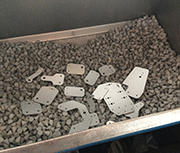
Laser cut components in Alu
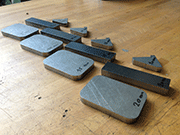
Laser cut components deburred in 5 to 20 min
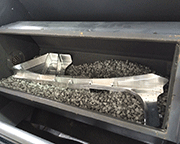
Aerospace alu machined component
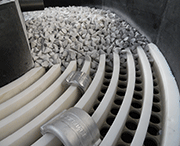
The final automatic separation in round vibrator
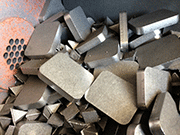
Oyx cut parts tumbled with casted iron pyramids
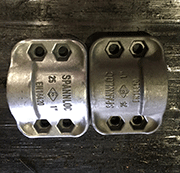
Hot forged alu parts descaling and smoothing
To try to better evaluate the requirements of a modern project of Surface Finishing, it is interesting to analyse the perspective of its sustainability towards the next twenty years.
Mass metal finishing, for example, produces important volumes of waste characterized, mainly, by the contents of heavy metals, mineral or synthetic abrasives, residuals of bonding agents (the ones used for the abrasive media like plastic or ceramic chips), and other kinds of pollutants generated both by the manufacturing process (lubricants, demoulding chemicals, etc.), chemical compounds used for the finishing processes, or for the water treatment processes.
The energy consumption of a process depends also from the way the process is designed – every machine consumes energy and requires maintenance in time (i.e.: the lining of the working bowls to be restored after end-of-working life, peculiar spare parts, etc.).
The costs paid for the waste disposal and for the waste transport, nevertheless, are a growing factor of costs for almost all the industrialized countries of Europe. This aspect is, of course, important also in several countries out of Europe.
Japan for example, is one very advanced country from this point of view and, as far as the "waste reduction" strategy is concerned, the Japanese have started from decennia to adopt some clever finishing processes that, from the beginning, tended to generate reduced volumes of waste.
The sensibility of the environmental sustainability of mass finishing in Europe is, day by day, growing, also looking at the evident change of weather all over. By the way, in Japan, this sensibility in the applications of mass metal finishing started many years earlier than in Europe, before current climatic change. One reason maybe was not directly concerned with the environment but with the finishing costs. It does not matter; the important thing is that someone started to give an important example of how to change in a proactive way.
This is one probability to be considered indeed, by the way, many eco-friendly processes are more convenient than "classic" ones simply due to their simplicity. As an example, the dry finishing (simple deburring) of small cupper plates with a dry process means to use a single finishing machine, then parts come out deburred and dry, whilst with a classic wet deburring process, the typical configuration is a machine for finishing, one for drying, and a centrifugal filter for mud filtering and water-compound recycling in closed cycle loop. The difference of costs is immediately evident; also, from an investment point of view, this comparison is clear.
Last but not least, dry waste is normally corresponding in volume/weight to the total volume/weight of the original pollutant, whilst in the wet process, the original volume/weight of the pollutants is increased by the water treatment additives, and the final result must conserve a final residual humidity with a major average volume/weight of about 60%.
The message is that, to consider a modern project of Surface Finishing, it is more and more important to consider, besides the Industry 4.0 kind of modernization, a strategy in parallel from the environmental point of view.
To make an example based on the finishing strategy already adopted about twenty years ago by some Japanese manufacturers of zinc alloy components, where the finishing process is based on dry tumbling of metallic workpieces with media made with residuals of natural leather, impregnated with vegetal oil and mineral abrasives – on the other hand, the main European competitors, working with plastic or ceramic media, water and compounds, were forced to pass the workpieces through a drying step and employ a wastewater treatment system, adding further costs and additives, thus generating a much higher final cost per component than the Japanese.
A typical saying in Japan is: "simplicity is cleverness".
With great respect to the cleverness and class of the Japanese culture and to their determination to win in almost all their industrial challenges, the above example is referred to years ago and does not mean that in Europe the resources are not enough "strategical" to compete with.
In the modern technologies offered by some European-made finishing processes, there are some interesting and sustainable opportunities. Most of these "alternative solutions" are not yet well known and widespread in the modern European industries, this is why "good vibrations" editorials may help to look for "good" alternatives.
One interesting example of "simplicity" is the rotary tumbling process of oxy-cut, laser-cut or plasma-cut components with "casted iron" media or, alternatively, with special polymeric media.
This kind of finishing process is simple and requires low energy resources.
A similar application is also developed with vibratory finishing equipment, both trough or circular types combined with special polymeric media and produces interesting results with average cost reduction in the order of 25% to 50% - as well, the investment costs and the energy costs are much less.
The Japanese style, to resume, has shown its capacity to anticipate the market needs respectively to European, American and other Asiatic manufacturers, providing vanguard solutions and modern strategies that at the same time, are satisfying competitiveness and generating environment friendly products. The automotive industry, with Toyota (for example), has given to the world a sustainable "option" with the hybrid technology – same with fuel cell technology, and they are now already working on products ready for the market whilst other manufacturers are still improving "classic" (or old?) solutions.
Good Vibrations
by Paolo Redaelli
Contributing Editor MFN and
Rollwasch® Italiana S.p.a.
Tel. +39.0362.930 334
Fax +39.0362.931 440
E-mail: paolo@mfn.li



























